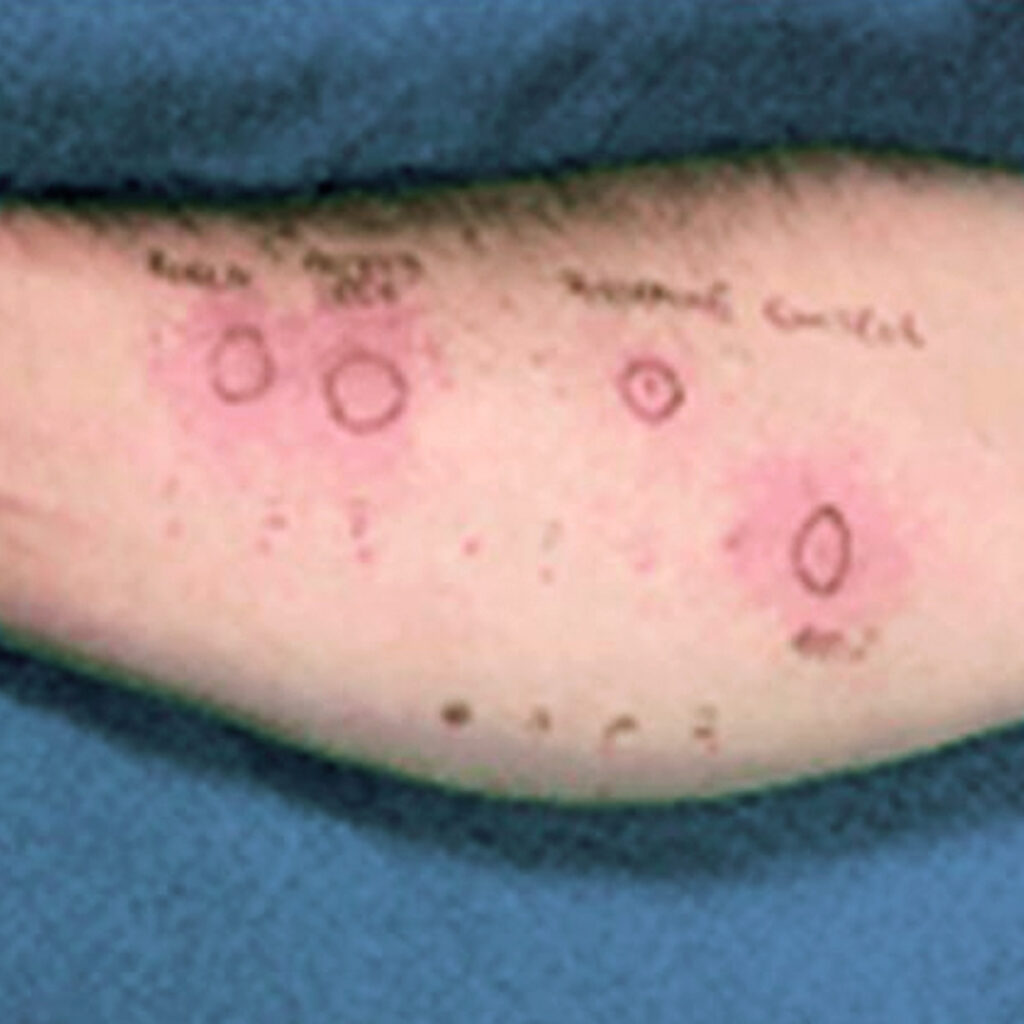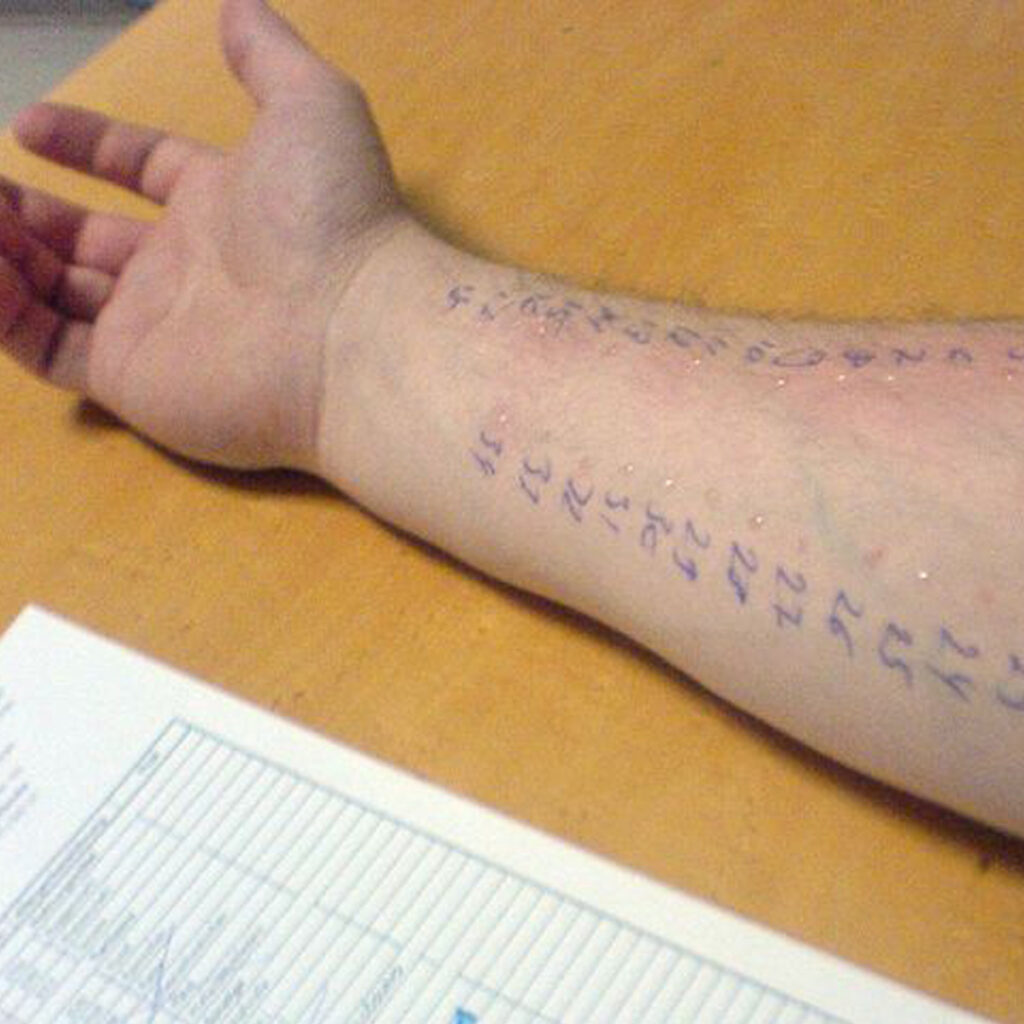Background

To effectively manage someone’s allergies, it is important to know what he/she is allergic to so that it can be avoided. A simple method of doing this is to expose the individual to a range of potential antigens by placing a drop of allergen extract on the patient’s skin and pricking through the drop. If the person is allergic (atopic) to any of the applied substances then the area will become red and slightly raised- a wheal and flare reaction.
Science

IgE, a special type of antibody, mediates Allergic (type 1 hypersensitivity) reactions. When it encounters a specific allergen IgE activates specialised cells called mast cells to produce chemicals such as histamine and leukotrienes that cause the visible symptoms typical of an allergic response. The skin prick assay is an ‘exposure’ test, that uses this hypersensitivity reaction, under controlled conditions, to identify what a person may be allergic to by measuring the overactive immune response to the potential allergen.
In the allergy clinic, the patient is asked to sit and role their sleeves up. A marker pen is used to identify on the arm where the allergens are to be applied. For every different allergen a solution is prepared that contains the proteins that may cause an adverse reaction. Some of these solutions are commercially produced specifically for skin prick testing but they can also be prepared in the clinic using fresh extract from the substance suspected of causing the allergy. A fine needle is used to gently prick the skin under the allergen solution. If IgE is present that specifically recognises the allergen it will activate mast cells to produce histamine, the outcome of this will be a raised circle of reddened skin called a wheal and flare around the point of allergen application. The presence of this wheal indicates that the patient has become sensitised to the particular substance via a previous exposure. To check if the test is working correctly a positive control is applied that contains histamine and should produce a reaction in all individuals. Also a negative control is used, this is simply a saline (salty) solution.
Clinical

Allergen exposure is a quick and accurate way of determining the allergen responsible for the hypersensitivity. It can be used for hundreds of suspected allergens. If an allergy consultant suspects that a patient may be allergic to a substance because they presented with symptoms after a unique exposure, for instance a meal in a restaurant, then they may try a skin prick test to investigate. A range of allergens may be used that reflect the suspected exposure, such as the ingredients of a dish served in a restaurant. In addition a set of common allergens, such as grass, cat dander, dust mite can be used to check for sensitivity. Whilst the test is extremely useful it is essential that the clinician considers the drawbacks with the test and may consider another approach. One such drawback arises if the individual is already on antihistamine drugs, in this case the test may not work at all. Alternatively if the patient has a predisposition to react severely to an allergen, such as with peanut allergy, then even this slight exposure may lead to a severe, life-threatening allergic reaction called anaphylaxis.
Once a specific allergy is diagnosed, a range of measures can be employed to reduce the number and severity of future reactions. Individuals with sensitivities that provoke asthma can be given inhalers that can prevent and reduce symptoms during summer months. Allergy drugs called anti-histamines can also be given to reduce symptoms. In cases, where the allergy can lead to severe allergic reactions (anaphylaxis), people may be equipped with “epipens” that give an injection of adrenalin to ease symptoms. Ultimately the test provides the patient information about what substances to avoid.
Accurate diagnosis can dramatically improve the quality of someone’s life by making him or her aware of substances they should avoid, and giving them the necessary strategies to cope with a reaction if they are exposed.
